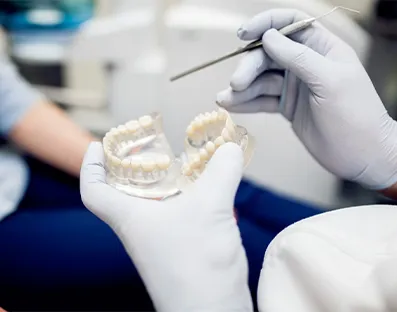What are implant prostheses for? This is a question that many people with missing teeth for various reasons wonder about. Many people think that implants and crowns are enough for the whole process. However, implant treatment can be covered with prosthetic teeth, especially in cases of multiple tooth loss.
What are implant prostheses for? Implants can largely replace missing teeth aesthetically and functionally. In cases where more than one tooth is missing, implant prostheses can be used instead of removable dentures. Thus, it is possible for the patient to have comfortable, useful and aesthetic teeth.
What is Implant Prosthesis Application?
Implant is the process of placing a screw that mimics the tooth root in this area. With this process, the root loss in the patient’s mouth is compensated and a structure that can be used for many years and is aesthetically and functionally very similar to natural teeth is created.
Implant prostheses are prostheses that are mounted on implants and usually include multiple teeth in cases where one or more teeth are missing. They can also be used in patients with no teeth left in the mouth. These prostheses can be removable (overdenture) or fixed (bridge). Thus, it will be possible to compensate for the missing teeth for many years without the patient having to undergo a large number of implant procedures.
This application is usually done as follows;
- First, implant tooth application is performed.
- When the implant area heals, an impression is taken from the mouth.
- Prosthetic teeth are prepared in the laboratory.
- It is added to the patient’s mouth with the appropriate method.
In this way, multiple tooth deficiencies are safely and permanently eliminated. The procedure can be performed for anyone who is physically suitable for it, even if they have no teeth in their mouth.

Why Fixed Prosthesis on Implant?
Implant and prosthesis applications have been among dentistry treatment options for many years. This application combining these procedures is relatively new. Dental implant application and subsequent fixed prostheses provide comfort to the patient in many ways.
Some of the benefits of fixed prostheses on implants can be listed as follows;
- Elimination of more missing teeth,
- More functional use,
- Durability and stability,
- Prevention of bone loss,
- Aesthetically good appearance.
This type of treatment requires a surgical procedure. The implant application, the healing process of the area, as well as the construction and application of the prosthesis can take several months. As with any medical procedure, implant prostheses have some risks and potential side effects. For this reason, it is necessary to inform the patient in detail about the subject before the applications and to determine that the patient has a suitable mouth and tooth structure for the procedure.

Which Prosthesis is Best for Implants?
More than one method can be used for implant prosthesis procedures. Which of these procedures will be most suitable for the patient should be determined together with the dentist in line with the examination and the needs of the patient.
Bridge prostheses can be used in patients with two or more missing teeth. In this case, implants are placed in the jawbone and the bridge is mounted on them. A bridge is a prosthesis consisting of several teeth to replace the missing teeth.
Removable (overdentures) prostheses are preferred when all teeth are missing. These are non-fixed prostheses that can be placed on an implant. They can be removed by the patient. Thus, they can provide convenience in terms of cleaning and maintenance.
All on four prostheses are also preferred for all missing teeth. In this technique, usually four implants are placed in the jawbone and a prosthesis is mounted on top. These prostheses provide the patient with a more natural look and feel and are fixed, meaning they cannot be removed or worn by the patient.
Each prosthetic procedure has different advantages and disadvantages. The best option will depend on the individual patient. Therefore, the method should be determined together with the dentist and the patient.





